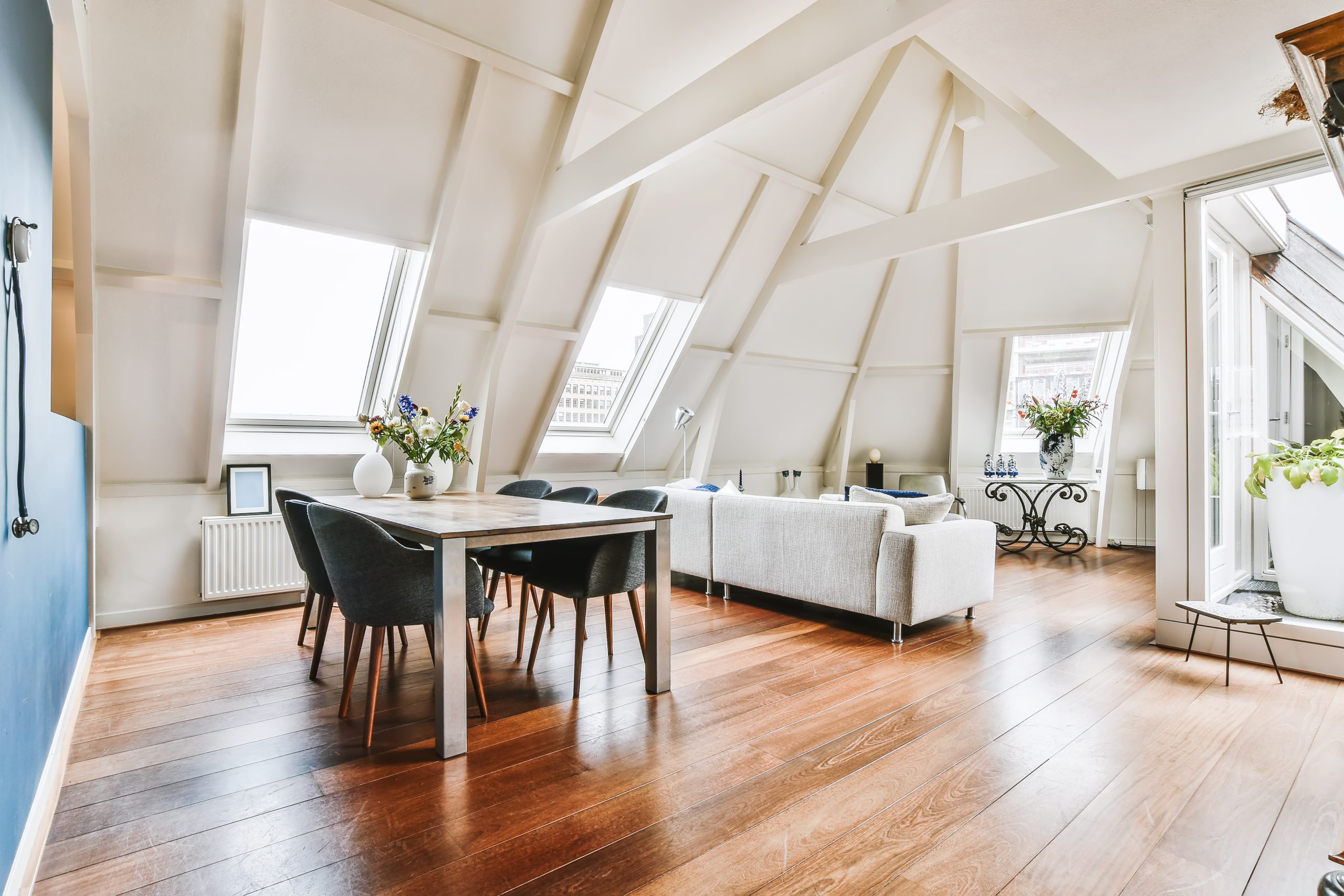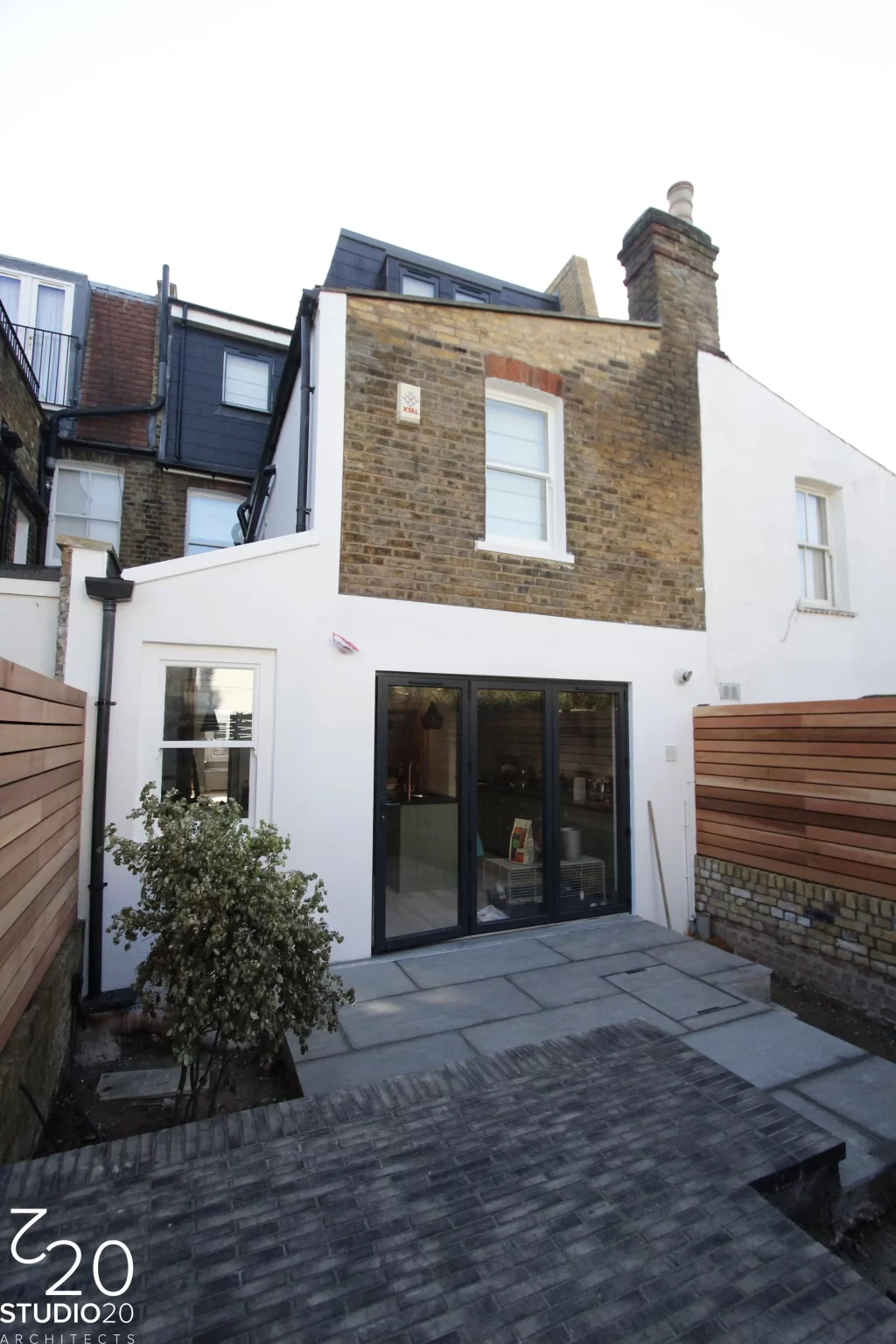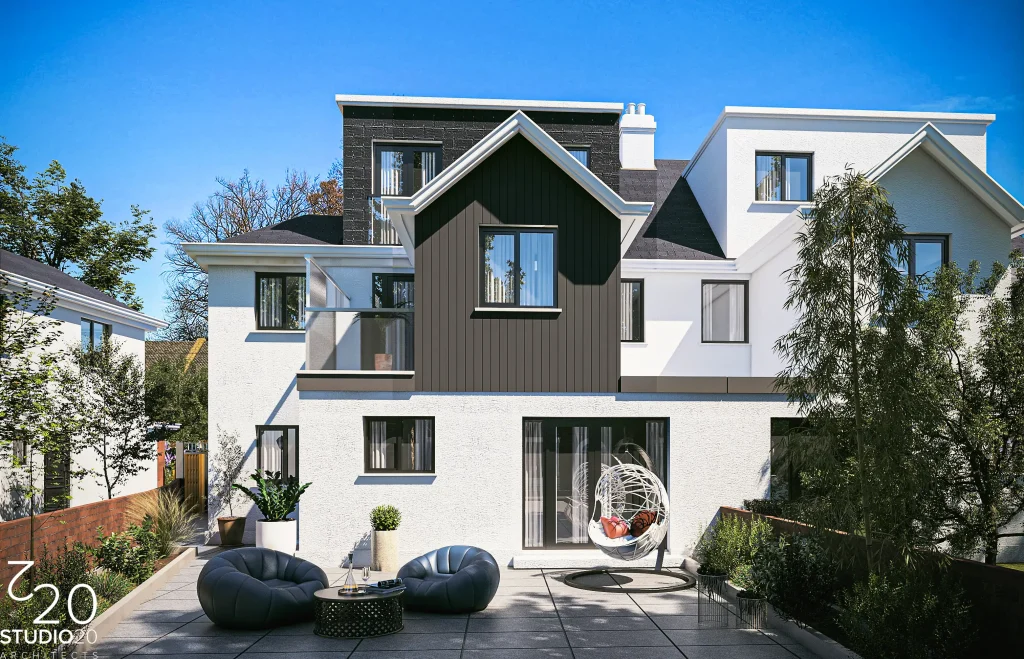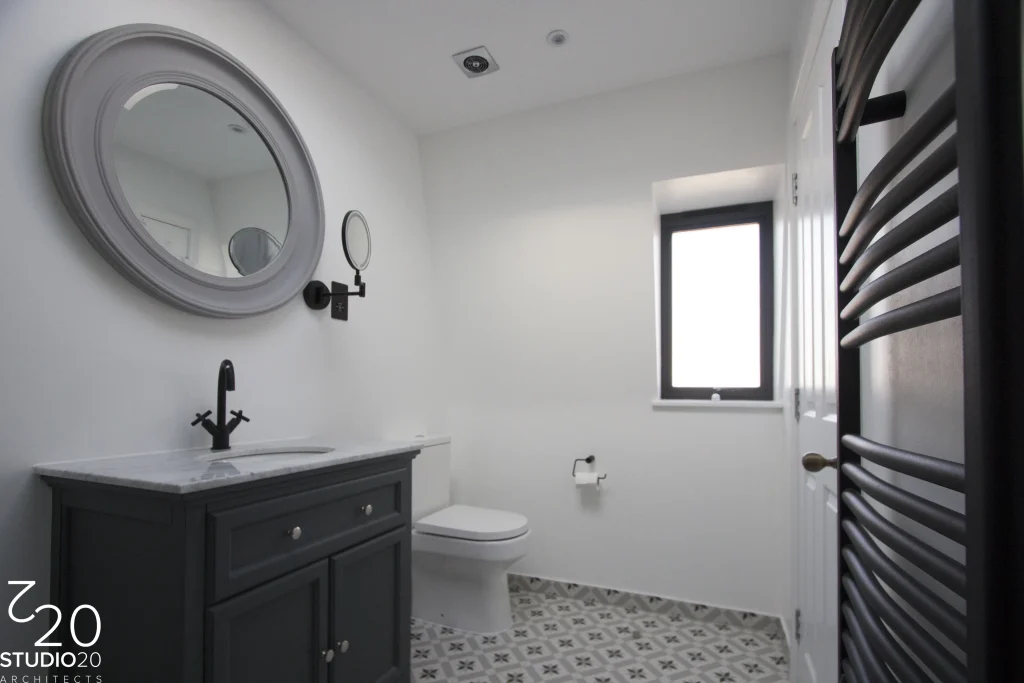Loft Conversion
Through a unique combination of engineering, construction and design disciplines and expertise.
Welcome to Studio20 Architects
At Studio20 Architects, we specialise in loft conversions in London, UK, transforming underused lofts into bright, functional living spaces. A loft conversion London project can be complex, but we make the entire process stress-free and straightforward. From the initial site survey and concept design to planning permission, construction oversight, and final detailing, our team guides you at every stage. As a trusted choice for anyone searching for a loft conversion near me, we’re committed to delivering beautiful results that elevate your home.


Loft Conversions
Loft conversions are one of the most effective ways to extend your home and increase its value. Whether you want a home office, an extra bedroom, or a cosy hobby room, loft conversion price offers a trusted loft conversion London solution that can unlock the hidden potential of your property. As specialists in loft conversions in London, UK, we’ve delivered numerous successful projects tailored to unique needs and spaces. From small loft conversion designs to complex dormer loft conversion builds, we help you choose the right option for your home. If you’re searching for a loft conversion near me, our team provides expert guidance on layouts, loft conversion stairs, planning, and design, bringing your vision to life with precision and care.
Loft Conversion Architects, Designers & Planning Consultants
Transforming unused lofts into bright, functional spaces is one of our key specialities at Studio20 Architects. With extensive experience across London homes, we provide a complete loft conversion London service that suits Victorian terraces, semis, and modern properties. Our architects, designers, and planning consultants guide you through every stage, from measured surveys and concept design to securing loft conversion planning permission and preparing Building Regulation drawings. Whether you’re searching for a loft conversion near me, we ensure your project is compliant, beautifully designed, and maximises your home’s potential.

Loft Conversion Planning Permissions
At Studio20 Architects, we make the loft conversion planning permission process simple, clear, and stress-free. Our experts specialise in loft conversions in London, UK, with deep knowledge of borough requirements across Richmond, Kingston, Wandsworth, and nearby areas. Whether you’re exploring a loft conversion London upgrade or searching for a loft conversion near me, we create approval-focused design strategies that maximise success even in conservation areas. From assessing feasibility to handling council negotiations, we manage every step. Contact our specialists today to secure planning permission for a loft conversion with confidence.
Why Choose Our Architects In London?
Thinking about a loft conversion? Book a free consultation with our team and explore how we can turn your unused loft into a beautiful, functional living space.
Transform your unused attic into a stunning new living space with a bespoke loft conversion that London homeowners choose for architectural excellence and contemporary elegance. Studio 20 Architects delivers premium, concept-driven loft designs with meticulous attention to detail, ensuring a refined transformation that elevates both lifestyle and property value.
Sustainability & Efficiency
Whether you need a small loft conversion or a dormer loft conversion, we focus on eco-friendly materials, high-performance insulation, and energy-efficient design. Homeowners searching for a loft conversion near me rely on us to create sustainable spaces that reduce energy costs while enhancing long-term comfort and environmental performance.
Cost & Budget
We provide clear, transparent pricing for every stage, from loft conversion stairs design to complete structural upgrades. Our team ensures your loft conversion London budget stays controlled through innovative planning, value-led solutions and expert guidance on loft conversion planning permission, helping you avoid delays, hidden costs, or costly redesigns.
Loft Conversion Process
Our streamlined workflow manages everything from initial concept to completion, including obtaining planning permission for the loft conversion smoothly and efficiently. Whether it’s a small loft conversion or a complete dormer loft conversion, we deliver precise architectural detailing, stress-free council approvals, and a seamless build experience for all loft conversions in London, UK clients.
Get A Free Quote For Your Loft Conversion Project
Whether you already have a vision in mind or need guidance exploring your design possibilities, our team is here to help. We’ll schedule an initial consultation at your convenience, where our experts will review your ideas, offer custom advice, and guide you on loft conversion planning permission. You’ll also receive a detailed, no-obligation quote for your loft conversion in London.

Here’s what our clients have to say.
EXCELLENTTrustindex verifies that the original source of the review is Google. Nadir is not just an architect… he’s an artist. He listens to his clients and designs and builds for their needs, not to his personal tastes as so many architects do. His genuine skill and willingness to design a project to the client’s needs sets him apart! They were extremely responsive, worked collaboratively with us, and delivered very exciting designs. Highly recommend!Posted onTrustindex verifies that the original source of the review is Google. I worked with Nadir from Studios Architects on an orangery project. He was very personable and helpful throughout the project and was happy to be on site whenever we asked and gave some good advice. Nadir helped make the project feel seamless and dealt with everything in a polite manner and with ease and good knowledge. I highly recommend.Posted onTrustindex verifies that the original source of the review is Google. Nadir was extremely approachable and professional. He was very accommodating as he altered our drawing plans several times on our request and got our plans approved by the council . Many thanksPosted onTrustindex verifies that the original source of the review is Google. Despite our best intentions we ran into a rookie planning move, where we allowed scope creep to move us away (incrementally at first) from our approved planning design. Nadir was so polite and even worked with us after hours to understand our issue and offer solutions which ultimately saved us from a potentially costly mistake. The team at studio20 and Nadir in particular are high quality and second to none! I would very highly recommend their services!!Posted onTrustindex verifies that the original source of the review is Google. I’ve worked with Studio20 Architects for my office interior. Menekse and Nadir helped us on interior design of my office to understand the process and was very helpful whenever I had questions. I felt that the team was experienced from Interior design process to project management for all the stages. Highly recommended!!!Posted onTrustindex verifies that the original source of the review is Google. Great service. Coordinated well between builders and structural engineer. The whole team (builders, tilers and painters) all did a quality job and were very very neat and considerate.Posted onTrustindex verifies that the original source of the review is Google. Excellent ideas and follow up. I have been loo Struggling to find an architect that would understand the complicated structure of my house untill I found these guys. They made things look simple.Posted onTrustindex verifies that the original source of the review is Google. I've used Studio20 service for planning Single storey rear extension for my South Croydon project. Nadir and his team were very helpful and they explained the process and were always at hand whenever I had questions.Posted onTrustindex verifies that the original source of the review is Google. Contacted Studio20 for some Building Reg and structural drawings Nadir was very efficient and polite he conducted the whole process professionally and with very good knowledge Thank you will definitely recommendVerified by TrustindexTrustindex verified badge is the Universal Symbol of Trust. Only the greatest companies can get the verified badge who has a review score above 4.5, based on customer reviews over the past 12 months. Read more
Types of Loft Extensions

Dormer Loft Conversion
A Dormer Loft Conversion is one of the most refined and functional ways to expand your home, offering a substantial increase in usable headroom and natural light. By extending the roof to form a vertical face, the dormer creates a spacious, full-height environment that feels like a natural continuation of the existing property. This intelligent configuration is particularly ideal for homeowners seeking a loft conversion London solution crafted by seasoned loft conversion specialists who deliver practicality and architectural elegance without compromising the roofline.
Our team at Studio20 Architects helps you maximise your home’s potential with beautiful house extensions London families love, designed by expert house extension architects London homeowners trust. We manage everything for you throughout the entire house extension design and build process, from the initial concept and securing planning permission and documentation, to selecting contractors and overseeing site supervision.
As a RIBA-chartered architectural and planning practice, our team of house extension architects in London maximises space and value for clients across London and the South East. Our talented architects deliver thoughtful, imaginative designs tailored to your lifestyle and budget.
Our house extension design services include concept design, planning consultations and applications, building regulations, structural calculations, management of the tender process, contract administration, and site supervision.
Book your free consultation today and start designing your dream space.
Why Choose a Dormer Loft Conversion?
- Generous Space: A dormer significantly enhances internal volume, enabling comfortable layouts for bedrooms, en-suites, creative studios, or flexible family spaces.
- Architectural Charm: Its balanced, structured form elevates kerb appeal while blending seamlessly with traditional and modern homes.
- Increased Natural Light: Large dormer windows allow daylight to cascade through the space, creating bright, uplifting interiors.
- Versatility: From guest suites to home offices, dormers adapt effortlessly to each homeowner’s needs.
- Property Value: A high-quality dormer conversion offers strong long-term value and excellent resale appeal.
Explore our Wood Green Loft Conversion for a beautifully detailed dormer design: https://studio20architects.co.uk/wood-green-loft/

Mansard Loft Conversion
A Mansard Loft Conversion offers one of the most transformative ways to unlock a whole additional floor within your property. Defined by its near-vertical rear roof slope and elegant proportions, the mansard creates expansive interior height and generous usable space. This style is especially popular in loft conversions in London, UK, where homeowners value architectural refinement paired with significant spatial enhancement delivered by an experienced loft conversion architect.
Why Choose a Mansard Loft Conversion?
- Exceptional Internal Space: The steep rear elevation and flat roof structure provide the largest possible footprint, ideal for complete bedroom suites or multi-room layouts.
- Architectural Elegance: Mansards complement period properties beautifully, enhancing symmetry and character while elevating the external aesthetic.
- Bright, Airy Interiors: Large windows or French doors introduce abundant natural light, enriching the new living spaces.
- Flexible Design Potential: From master suites to creative work zones, the mansard adapts to varied lifestyle needs.
- Strong Long-Term Value: A premium mansard conversion significantly increases both property worth and functional living capacity.
See how our Merton Loft Conversion showcases spatial transformation using a mansard-inspired design:
https://studio20architects.co.uk/merton-loft-extension/

Hip-to-Gable Loft Conversion
A Hip-to-Gable Loft Conversion is a highly effective way to expand homes with sloping hip roofs, especially semi-detached and detached properties. By replacing the angled hip with a vertical gable wall, this conversion unlocks substantial internal space and becomes even more valuable when combined with tailored loft conversion services that ensure structural efficiency and aesthetic harmony. It is ideal for anyone searching for a loft conversion near me that delivers efficient expansion without altering the home’s core character.
Why Choose a Hip-to-Gable Loft Conversion?
- Significant Space Gain: Transforming the hip into a full gable dramatically increases headroom and usable floor area.
- Perfect for Limited Lofts: Homes with restricted attic height benefit greatly from this structural enhancement.
- Seamless Exterior Integration: The new gable is designed to complement existing architecture for a cohesive aesthetic.
- Ideal for Multi-Room Layouts: This conversion often supports two bedrooms, a bedroom-plus-office, or a bedroom with an en-suite.
- Strong Property Appeal: The combination of space, style, and practicality makes this design highly attractive to future buyers.
See spatial optimisation in our Wood Green Loft Conversion, suitable for hip-to-gable opportunities:
https://studio20architects.co.uk/portfolio/wood-green-loft-conversion-london-planning-residential-architecture/

L-shaped Loft Conversion
An L-Shaped Loft Conversion is one of the most generous and architecturally distinctive options available, combining two dormers at right angles to create exceptional volume. This style is particularly recommended for homeowners seeking loft conversion London solutions delivered by a premium loft conversion company that understands how to maximise period-home potential while respecting heritage character.
Why Choose an L-Shaped Loft Conversion?
- Outstanding Internal Space: The unique configuration delivers one of the largest loft layouts—ideal for multiple bedrooms, studios, or a private suite.
- Natural Zoning: The L-shaped form provides built-in spatial division, enhancing privacy and functional flow.
- Excellent Light & Ventilation: Multiple dormer windows allow light to reach deeper into the loft, creating bright, welcoming interiors.
- Perfect for Period Homes: This design aligns seamlessly with the proportions of London townhouses and terraced homes.
- Exceptional Value Addition: The impressive scale and versatility of this layout offer one of the highest potential returns on investment.
Explore multi-zone possibilities in our Dartford Longfield & New Barn Loft Conversion:
https://studio20architects.co.uk/dartford-longfield-and-new-barn-loft-conversion/

Roof-Light (Velux) Loft Conversion
A Roof-Light Loft Conversion is the most cost-efficient and least disruptive way to convert your loft, ideal for homes with sufficient existing headroom. Without altering the roof structure, this design introduces new life into the attic through strategically placed roof windows. It is particularly suitable for clients navigating planning permission for a loft conversion while seeking a refined loft conversion design that preserves the roofline’s integrity.
Why Choose a Roof-Light Loft Conversion?
- Cost-Effective Transformation: This option offers excellent spatial enhancement at a significantly lower cost than structural extensions.
- Planning-Friendly: Since the roofline remains unchanged, approvals are faster and more straightforward.
- Bright, Airy Interiors: Velux windows invite generous natural light, creating a serene and uplifting atmosphere.
- Minimal Construction Impact: With fewer structural adjustments, the build process is faster, cleaner, and easier for families.
- Elegant & Discreet: The home’s exterior aesthetic is preserved while the interior gains sophistication and function.
See light-enhancing solutions in our Wandsworth Loft project:
https://studio20architects.co.uk/wandsworth-putney-heath-loft-conversion/

Piggy-Back Loft Conversion
A Piggy-Back Loft Conversion is an innovative solution designed for homes with an existing rear outrigger, creating a new raised loft level above it. This unique style offers significant structural and spatial advantages, particularly for homeowners requiring thoughtful loft conversion planning while maximising volume in urban properties. The elevated design dramatically increases vertical clearance and overall footprint, making it an excellent choice for London homeowners seeking advanced space optimisation.
Why Choose a Piggy-Back Loft Conversion?
- Maximum Space Utilisation: By building above the outrigger, this design extracts the full potential from your existing structure.
- Expansive Layout Options:Perfect for creating two full-size bedrooms, a master suite, or a large creative workspace.
- Enhanced Ceiling Height: IThe elevated structure provides impressive vertical volume, bringing a sense of luxury to the space.
- Ideal for Terraced Homes: Particularly suited to London’s traditional rear-outrigger layouts.
- Long-Term Value: This design delivers exceptional footprint efficiency, resulting in strong investment returns.
See elevation-led spatial design in our Kingston Loft Conversion:
https://studio20architects.co.uk/kingston-loft-conversion/
Frequently Asked Questions About Loft Conversions
Most simple loft conversions can be completed under permitted development rights, meaning formal planning permission is often not required. However, you must still adhere to specific limits and conditions, especially in conservation areas or if altering the roofline significantly.
Yes, a well-executed loft conversion adds value to your property by providing extra usable space, often increasing the property's value by 15% to 20%. The final return depends on the quality of the finish and the resulting increase in bedrooms/bathrooms.
On average, the process to complete a loft conversion typically takes between 6 to 12 weeks, depending on the complexity (e.g., whether it’s a simple Velux conversion or a complex hip-to-gable or Dormer).
Absolutely. Unlike planning permission, building regulations for a loft conversion are mandatory for every project. These regulations cover critical aspects like fire safety, structural integrity, insulation, and the safe escape route in case of a fire.
Yes, many straightforward projects, like rear Dormer loft conversions, fall under permitted development. This allows you to bypass the full planning application process, provided you follow size restrictions and do not significantly alter the front elevation.
Unfortunately, not every home is suitable. The primary limiting factors for a loft conversion are the existing head height, the roof pitch, and the structure of the existing trusses or framework.
Popular Questions, you may be interested in
Not always. Many straightforward loft conversions and smaller home extensions can fall under Permitted Development, provided the design stays within the allowed size and roof alteration limits. However, if your home is in a Conservation Area, subject to an Article 4 direction, part of a terraced street with stricter controls, or if the proposal significantly alters the roofline, then a full planning application will be required.
Studio20 reviews your property in detail and advises the correct route before any drawings are produced.
Yes. All structural building works including loft conversions, extensions, and internal structural changes legally require Building Regulations approval. This ensures compliance with essential standards covering structural stability, fire safety, insulation, ventilation, and staircase requirements.
Studio20 prepares all Building Regulation drawings and coordinates approvals and inspections on your behalf.
Not legally, but it is strongly recommended. An architect or experienced architectural designer ensures your home gains maximum space and long-term value while remaining fully compliant with planning and Building Regulations. Studio20 develops tailored designs, manages applications, handles technical drawings, and reduces costly on-site issues through proper pre-construction planning.
The process begins with a measured survey and detailed architectural drawings. These, along with supporting site plans and application forms, are submitted electronically to your Local Planning Authority.
Studio20 manages the entire process of preparation, submission, communication with the council, responding to queries, and negotiating until a decision is issued.
You can request a quote via phone, email, or by completing the form on our website. Studio20 currently offers a free site survey (worth £350) as part of our campaign for loft conversions and extensions. After a brief consultation and property review, we provide a detailed, no-obligation quote along with a customised proposal.


